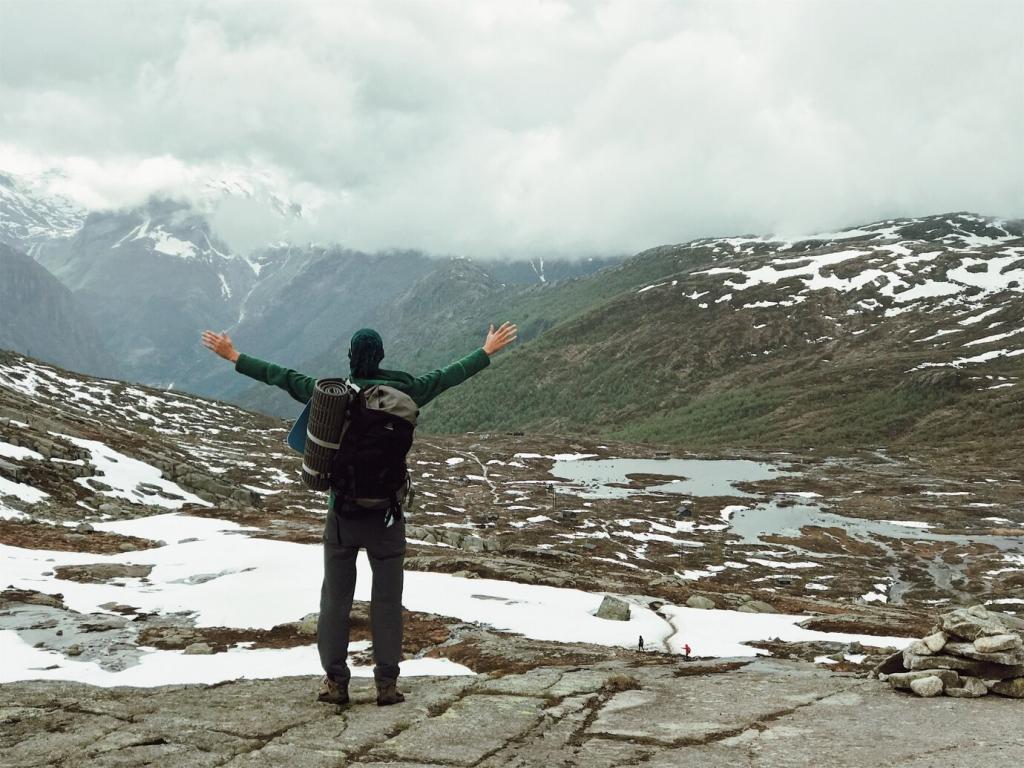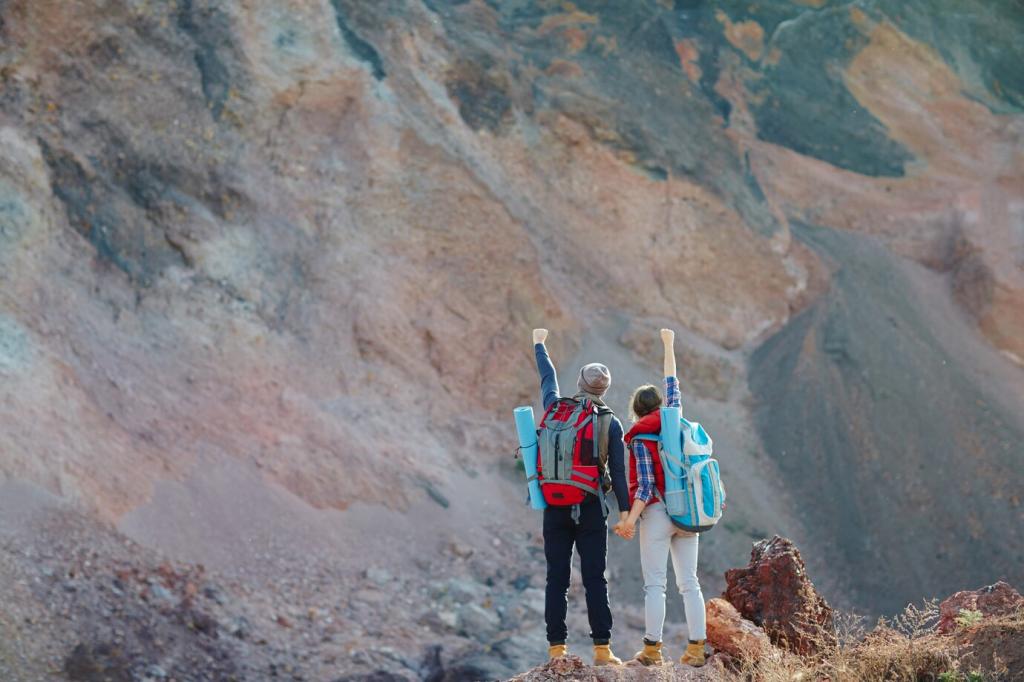Life on the Edge: Plants, Crusts, and Critters
Alpine grasses, sedges, and dwarf shrubs knit soil together like stitching on a seam. Their roots slow runoff, trap sediments, and anchor fragile edges. When we trample vegetation beside a gully, we break that stitching, widening scars. Stay on durable surfaces to support natural repair.
Life on the Edge: Plants, Crusts, and Critters
Microbial mats of cyanobacteria, lichens, and mosses bind particles and reduce erosion, but crush easily under boots. In summer heat, they are brittle and particularly sensitive. If you see dark, bumpy patches, avoid stepping there. Explain these living blankets to friends so everyone treads more kindly.
Life on the Edge: Plants, Crusts, and Critters
Game trails often contour slopes gently, while erosion paths plunge straight downhill. Deer prints, scat, and consistent track width hint at animal routes. Resist the temptation to follow them, especially where they intersect fresh gullies, and keep pets leashed to protect wildlife and vulnerable soils.
Life on the Edge: Plants, Crusts, and Critters
Lorem ipsum dolor sit amet, consectetur adipiscing elit. Ut elit tellus, luctus nec ullamcorper mattis, pulvinar dapibus leo.









